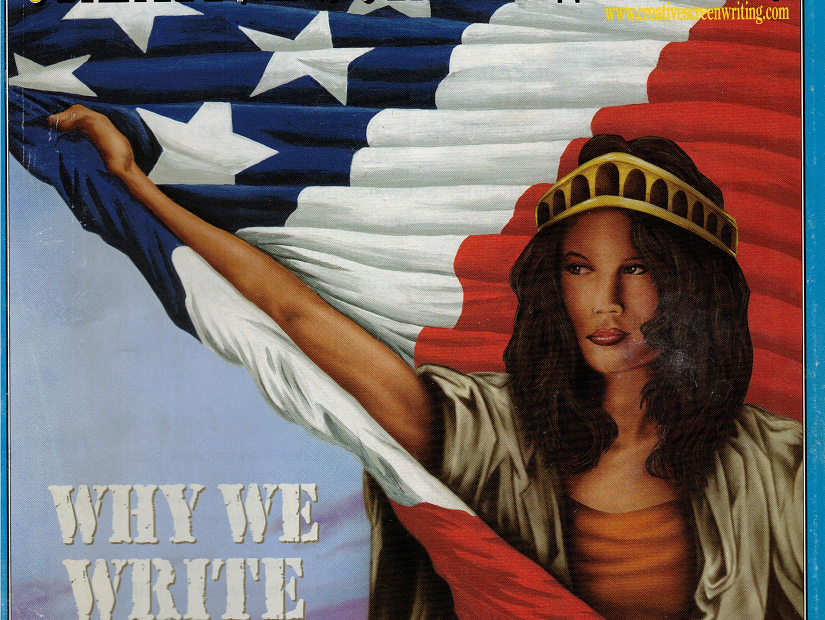This article originally appeared in the February, 2002, Number 29 issue of *spark.
“America is under attack. Not from Osama bin Laden, but from our peaceful neighbours to the north.” (Joel Joseph, chair, Made in the USA Foundation)
I am an unabashed admirer of Canadian film.
I love our internationally renowned auteurs (artists like Atom Egoyan, David Cronenberg and Patricia Rozema). I love our less well known, but equally visionary auteurs (filmmakers like Guy Maddin, Clement Virgo or John Greyson). Canadians have made some sweet, funny films (think: Sandra Oh’s Double Happiness, Tom Fitzgerald’s The Hanging Gardens or Alan Moyle’s New Waterford Girl). And I haven’t even touched our documentary tradition, which is one of the strongest in the world.
This puts me on the wrong side of public opinion, which has it that the Canadian film industry well and truly sucks. My response to this stance is usually: “How would you know?” Most people have little opportunity to see Canadian films, which are shown on only three per cent of screens in the country. (Roughly three per cent is non-North American; the balance comes from the United States.) Since access to Canadian films is severely limited, most people’s negative impression of them is based on hearsay (as well as the Canadian propensity to knock anything homegrown), or, at most, one or two negative experiences with Canadian film. This is like saying American films are horrible based on a single screening of The Wash.
Occasionally, the federal government stirs from its torpor and suggests that maybe we should have more access to Canadian films. After all, the government puts a lot of money into film production; it would seem to be a waste of resources if the results are not seen by the public. Insisting that the major Canadian theatre chains (Cineplex-Odeon and Famous Players) show more Canadian films on more screens would seem like a sensible policy; a Canadian quota system on radio is believed to have been largely responsible for a vibrant Canadian music industry.
It has, however, been opposed by the Motion Picture Association of America (MPAA – whose President, Jack Valenti, I refer to as “The Godfilmer”). Whenever there has been proposed legislation to get films on more Canadian screens, the MPAA has pressured the American government to pressure the Canadian government not to go ahead with it. To date, the MPAA has been wildly successful.
Odd, then, that Valenti has actually come out in favour of the Canadian film industry.
The issue is so-called “runaway productions,” American films and television shows that are made in Canada. Many actors and technicians in Hollywood are finding that they have less work because the studios are making films outside of the country, largely in this country. They say this is because Canada engages in unfair trade practices, and they have asked the American government to place countervailing duties on Canadian products (penalizing Canadian producers as much as $1.8 billion, the value of the runaway productions).
Their arguments, as far as I can see, do not hold water. It is true that various levels of government in Canada offer financial incentives for film and television productions, but so do virtually all of the states in the union. (If this is the real issue, why doesn’t California go after Alaska?) Government support seems to be part of doing creative business these days. The other major factor is the weakness of the Canadian dollar, which makes Canada a less expensive place to do business.
Neither of these factors strike me as being an unfair trade practice. However, proving unfair trade is not the issue. As long as the American filmmakers can convince their government that Canada is acting unfairly, it will penalize Canadian business. And, as the softwood lumber dispute has shown, Canada will be helpless to defend itself against American corporate bullying. While economists blather about the theoretical benefits of free trade agreements, this is the reality: you don’t have to have a valid case, you just have to convince sufficiently powerful politicians to take your side. So, blame Canada. Overblown rhetoric, such as the statement quoted above, is a political ploy to garner support for this.
Enter Valenti. Representing the major Hollywood studios, Valenti essentially takes Canada’s side, arguing against countervailing tariffs. Will wonders never cease? His reasons should be fairly obvious: Hollywood films are ludicrously expensive (on average, $30 million and climbing), and the studios are anxious to exploit any possibility of keeping costs down. It’s just business.
This argument highlights the problematic issue of runaway productions for Canada: culture versus industry. In the North American Free Trade Agreement, Canada was given an exemption for culture. This would seem to stop the runaway production debate before it has even begun, except for one thing: neither American productions nor the cheap rip-offs of American genres that have been a staple of Canadian film production for decades add a single thing to Canadian culture.
The argument was that foreign productions would help develop a talent pool that would benefit local filmmakers. There has always been some truth to this. However, it also true, as one Canadian producer has recently noted, that American productions drive up the cost of talent, making the experienced people more expensive than most low budget Canadian productions can afford.
In any case, inducing American film companies to shoot in Canada seems to be of more economic benefit than cultural, which would seem to leave it open to NAFTA challenges (whether or not they are valid). I wouldn’t be especially heartbroken if Toronto, Montreal and Vancouver stopped substituting for American cities and were actually allowed to play themselves in indigenous productions that were seen by more Canadians. It’s about time for the Chretien government to reexamine this from the perspective of cultural, rather than industrial policy.
Can’t get enough of *spark? For more intellectual stimulation, go to the source: *spark online.


